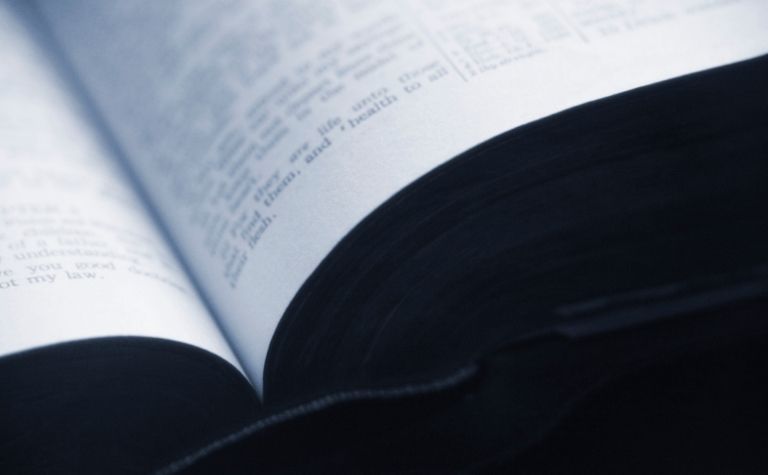Norse mythology is an interesting belief system to many people. Though characters from Norse myths fill the storylines of popular movies and comic beliefs, they also comprise the worldview of ancient Scandinavians, including the Vikings.
Does Norse mythology have a sacred text like other religions do?
Norse mythology does not have a Bible. Its stories were orally passed down from one generation to another.
Some Norse characters are depicted in ancient art, like rock carvings. But the Vikings didn’t keep written records, and there is no comprehensive book that explains their worldview.
Why Norse Mythology Doesn’t Have a Bible? What Books or Literature Was Important to the Vikings? Is a Lot of Norse Mythology Found in Poetry? What’s It Like? What Written Sources Are There on Thor, Odin, Loki, and Freya?
Keep reading to learn the answers to these questions and others.
Also, see Are Norse Gods Good or Evil? to learn more.

Why Norse Mythology Doesn’t Have a Bible
Norse mythology doesn’t have a Bible or any similar religious text because, at its peak, it was an oral cultural tradition.
The pillars of the tradition were reproduced in epic poems and songs that were typically improvised by Shaman-like court performers known as Skalds.
Some historians suggest that the Vikings believed that sacred songs performed by these “divine word” mediums would lose their authenticity if written down and handed out to everyone.
Locals memorized the works of Skalds, passing the details down to historians after Christianity arrived in the Germanic region.
What Books or Literature Was Important to the Vikings?
There is no historical documentation of books or literature important to the Vikings, as the oral tradition practiced at the time discouraged documentation.
However, modern Norse mythologists and biological Vikings revere some transcripts of Old Norse poems and prose.
Now, let’s take a look at the books that are highly respected by modern Norse Mythologists.
Also, see What is the Bifrost in Norse Mythology? to learn more.
The Poetic Edda and the Prose Edda
These books are regarded as the main sources for Norse mythology.
They contain retellings of Nordic myths as documented by Snorri Sturluson. [1]
He used contributions from Christian historical writers at the beginning of the medieval period, who documented the myths as told by other people.
Some scholars believe that these texts communicate how Christians perceived Nordic gods and the myths around them more than how the Vikings saw them.
However, The Poetic Edda remains a widely trusted source to date. It contains the “Havamal”, a major source on Viking values.
History of the Danes by Saxo Grammaticus
The History of the Danes is one of the most widely revered sources in Danish history. [2] Modern-day Norse mythologists value the book as much as the Prose Edda.
The work by Saxo Grammaticus is also one of the oldest available sources for the history of Latvia and Estonia.
Secondary and Tertiary Lore
These include texts like the Norse Sagas and Beowulf. [3] The Norse Sagas are historical prose-narratives documenting events that mostly took place in Iceland between the 9th and 11th centuries.
Beowulf is an Old English poem containing a Germanic heroic legend, but the date of its composition is a contentious debate among scholars.
However, most agree that the poem was likely composed between 975 and 1025.
The value placed on works classified as secondary and tertiary lore varies amongst scholars, historians, and Viking mythology enthusiasts.
Also, see Is Norse Mythology Norwegian? to learn more.
Is a Lot of Norse Mythology Found in Poetry? What’s It Like?
A lot of Norse mythology is found in poetry. In English poetry, many examples abound of poets inspired by Norse mythology.
Some, such as Walter Scott and the Anglo-Saxon author of Beowulf, leveraged the main characters. Others, such as Matthew Arnold and Thomas Gray, adapted real texts.
Another group of poets, such as David Jones and William Blake, modified central figures to fit into their poetic theme. Today, there’s still a heavy presence of Norse mythology in poetry. [4]
Young poets reference ancient Old Norse texts in their work or create bodies of work entirely based on them.

What Written Sources Are There on Thor, Odin, Loki, and Freya?
The written sources on Thor, Odin, Loki, and Freya are mostly The Eddas. There are few sources of information from the Viking period.
Most texts recovered, apart from The Eddas, include descriptions written by Arabic travelers, skaldic poetry, and Christian accounts from Western Europe.
Thor
The written sources on Thor include:
- The recorded history of the Germanic people.
- The Poetic Edda. He was central in poems such as “Hyndluljóð”, “Alvíssmá”, “Þrymskviða Völuspá”, “Skírnismál”, “Hárbarðsljóð”, “Grímnismál”, and “Lokasenna.”
- Prose Edda
- Heimskringla
- The sagas
- Gesta Hammaburgensis ecclesiae pontificum
Odin
One of the first clear written sources on Odin is Tacitus’s work Germania in the late 1st century. Other sources include the following:
- “Nine Herbs Charm”
- Old English rune poem
- Solomon and Saturn
- The Poetic Edda
- The Prose Edda
- The Ynglinga saga
- Heimskringla
Loki
Loki is a contentious character in Norse mythology. Scholars have yet to agree on how he became a god, and he does not feature in as many earlier historical texts as other gods like Thor and Odin.
However, there are a few written sources on his character. Some of them include:
- The Norwegian Rune Poems
- The Poetic Edda
- The Prose Edda
- Heimskringla
Freyja
As one of the pillars of Norse mythology, Freyja features prominently in some of the earliest Vikings texts. Some of the written sources include:
- The Poetic Edda
- The Prose Edda
- Heimskringla
- Sagas of Icelanders
- Modern Scandinavian folklore
Modern Books on Vikings
Numerous authors have attempted to provide insights into real Viking life over the years. Some of the best examples, found on Amazon.com, include:
- The Greenlanders by Jane Smiley: The book contains the result of deep research into the life of Erik the Red, and covers the rise and fall of his colony.
- Vikings: The North Atlantic Saga (Fitzhugh and Ward): The book is a multi-part look into the life of the Vikings that focuses on their conquests and migration.
- Echoes of Valhalla: The Afterlife of the Eddas and Sagas by Jón Karl Helgason: The book looks at Old Norse sagas reworked in modern literature, music, and theatre.
Final Thoughts
Norse mythology doesn’t have a Bible. Unlike most Abrahamic religions, the core tenets of Norse mythology were handed down orally from generation to generation.
